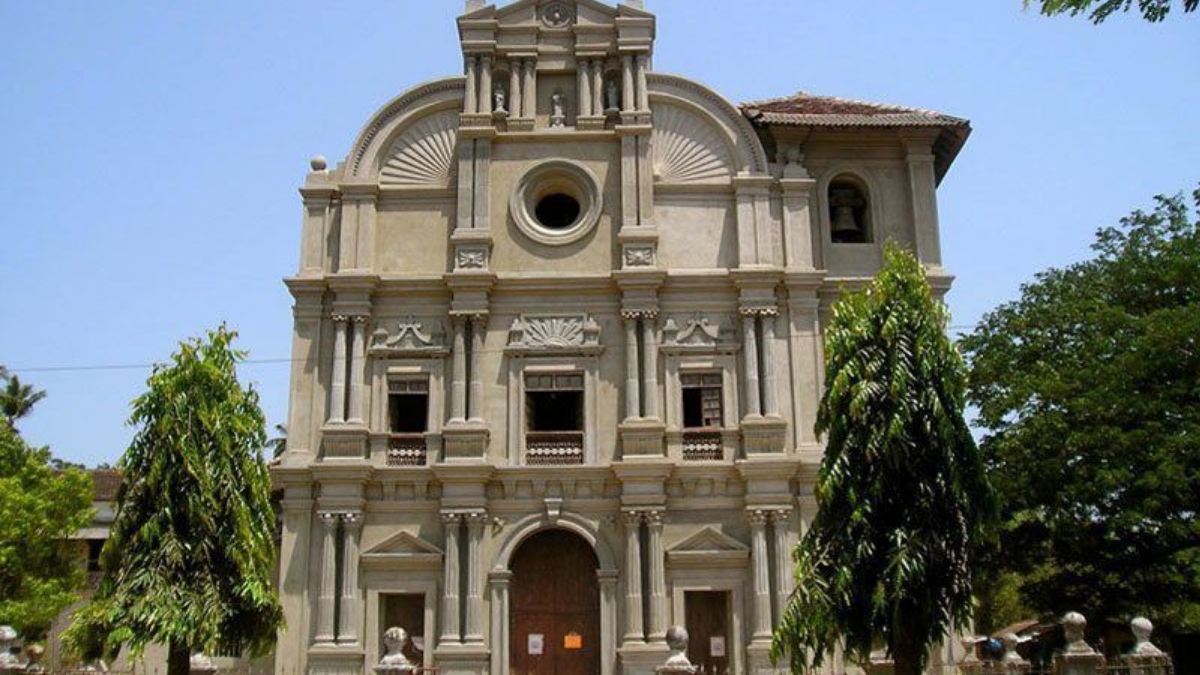At a distance of 29 km from Panjim Kadamba Bus Stand, 25 km from Vasco Da Gama Railway Station and 11 km from Margao Railway Station, Church of Saviour of the World is situated in Loutolim South Goa.

The Church of Savior of the World is also known as Igreja do Salvador do Mundo. The Church of Savior of the World Church Loutolim was built in 1586. It was built in Loutolim to look after the spiritual needs of the catholic population of the village after they converted from their original Hindu beliefs.
This is a small Church with a simple facade. The Church is one of the best preserved Jesuit churches of the late 16th century in Salcete and from an architectural point of view is very close to its prototype, the Church of Rachol.

The facade is very elaborate and complex, corresponding to profound architectural changes introduced in the 19th century. The Church has a single nave and tiled roof. It has a false transept and chancel with barrel vault decorated with coffers. A single tower stands against the west side of the front façade. Particularly notable are the west and south exterior elevations. Everything that is considered paramount to the structure of the church has been carefully plastered and whitewashed.
Loutolim originally had a church dedicated to St Bartolomew founded in the year 1581. Since this church was small , it could not accommodate the growing population. A new church was then built in 1586. The Church of Saviour of the World Lotoulim is called ‘Salvador do Mundo Igreja em Loutolim, Goa’ in Portuguese. This church stands apart with its unique structure of the church building. The church celebrates its feast on the third Sunday of November.
Legend has it that the construction of this Church was mired in controversies. With an ever-growing number of neo-Christians, the Jesuits decided to build a large place of worship and they chose the site of the demolished temple site of Shri Ramnath. However, when this attempt failed, given local opposition to further modify the temple site, they chose its current location. A second setback followed when a multitude of ants raided the foundation of the church during its early stages of construction (In Goa, many people worship ants/ant-hills as an ancient Goddess Santeri). When the priest heard calls to abandon the project, he placed a picture of the Saviour of the World at the construction site and miraculously, the ants disappeared. Rest is history.
For a small village of a few thousand people, the church, built in the late 16th century with its north-facing facade and ornamental interiors, is a central landmark. The edifice is said to be built on the design of the Church in Rachol and even resembles those of its time in Old Goa. The six smaller chapels affiliated to it decentralise religious activities for people scattered beyond the village. Situated opposite Loutlim’s post office, the Church is at an intersection of six-seven small streets and faces a cemetery separated by a small garden.
In front of the facade is a courtyard ringed by dwellings and completed by the modern cemetery in a position nearly axial to the church door. There is also a school, the priest’s quarters and a walled cemetery to add to it.


